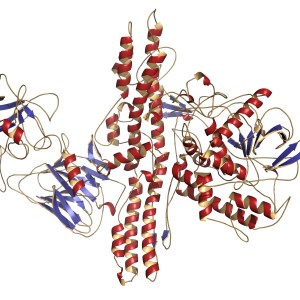Botulinum Toxin Studied as Therapy for Scleroderma-Associated Raynaud’s Syndrome
Written by |

 Botulinum toxin has been very popular for reducing wrinkles and more recently for treating painful conditions. The toxin may soon have a new use for another medical condition. Johns Hopkins University researchers are studying whether botulinum toxin can provide relief to people suffering from scleroderma-associated Raynaud’s Syndrome.
Botulinum toxin has been very popular for reducing wrinkles and more recently for treating painful conditions. The toxin may soon have a new use for another medical condition. Johns Hopkins University researchers are studying whether botulinum toxin can provide relief to people suffering from scleroderma-associated Raynaud’s Syndrome.
Scleroderma is a chronic autoimmune disease characterized by hardening connective tissue. Almost all people with scleroderma have Raynaud’s symptoms. In Raynaud’s syndrome, areas of the body such as the fingers and toes feel numb and cold in response to cold or stress. This occurs because small arteries narrow, restricting blood circulation.
Botulinum toxin is made by bacteria called Clostridium botulinum. Although botulinum is a poisonous neurotoxin at high concentrations — one that can cause paralysis and even death — low doses have many medical uses. If a small amount of botulinum toxin is injected into a muscle, it stops muscle contraction by preventing the release of the neurotransmitter acetylcholine. This relaxes the muscle and can reduce pain.
Previous studies have demonstrated improvements in patient pain and reduced skin ulcers with botulinum toxin treatment of Raynaud’s syndrome. The reasons for the improvements in the skin are not clear. The studies were limited by lack of controls for comparison, differences in the degree of the disease, and different doses used.
[adrotate group=”3″]
A recent retrospective chart review of patients with Raynaud’s syndrome provides hope that the treatment may be helpful. According to the study report, presented at AAHS ASPN ASRM Annual Meetings in 2011 by Kelli N Webb and colleagues of Southern Illinois University School of Medicine: “Twenty-three out of 29 patients (79%) reported pain-reduction after a single injection…Tissue perfusion results demonstrated a marked change in blood flow (-48.15 to +425%) to the digits. Fifteen out of 17 patients (88%) with finger ulcers healed within 60 days.”
To further study the use of this treatment, Johns Hopkins Researchers are currently enrolling patients for a Phase 3 clinical trial to determine whether botulinum toxin can relieve symptoms of Raynaud’s syndrome in people with scleroderma. Principal investigator, Dr. Scott Lifchez described the study stating “The purpose of the trial is to test an existing medication, Botox (commonly used for cosmetic wrinkles and also for muscle spasticity) for its effectiveness in controlling blood vessel spasm (Raynaud’s phenomenon) in patients with scleroderma. Lower level evidence suggests that it is, but the current study is the first randomized, placebo-controlled trial on the use of Botox for this purpose.”
The trial began enrolling patients in late January of 2015, and is co-sponsored by Allergan.
Each subject will be injected with Botulinum toxin A (Botox) in one hand, and the opposite hand will be injected with sterile saline (placebo).
Before receiving any treatment, study participants will complete study questionnaires, their hands will be examined for any evidence of skin problems, and the researchers will measure hand blood flow using laser Doppler imaging. The subjects will then receive the Botulinum toxin A treatment.
To measure the severity of Raynaud’s symptoms the study subjects will fill out questionnaires weekly for four months. The researchers will also measure skin problems and blood flow each months for the four-month period.
The scientists plan to complete the study by December of 2016.





